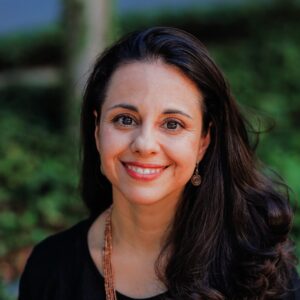
Backward Design Your Life: A Pedagogy of Self-Care
It was Christmas break 2019 and I was exhausted. I had just finished my first full-time semester. I was frantically composing new lecture material during the day and at night nurturing twin toddlers. There was little self-care happening in my days, let alone a dynamic spiritual life.
After losing myself in the holidays, as January came closer, my mind turned back to refining my spring classes. With the pedagogy of “workshops past” swirling in my head, it suddenly occurred to me: “Could I ‘backward design’ my life?”
For a refresher or introduction to “backward design,” I recommend Grant P. Wiggins and Jay McTighe’s chapter “Backward Design” in Understanding by Design.[1] Their “what,” “how,” and “client centered” emphasis helped me frame my own journey of self-care below. Transitioning my thinking from the classroom to my own life, I found their quote from George Pólya’s 1945 work insightful, “We concentrate on the desired end, we visualize the final position in which we would like to be. From what foregoing position could we get there?”[2]
That December I began a thought experiment, seriously asking myself where I wanted to be at the end of my life and how I would get there. Imagining myself as an elderly woman, I saw myself seated—peaceful, wise, and smiling. It was “quality” that I wanted out of life, not “quantity.” For me, a successful life could be measured through my relationships and my state of being.
In a backward design (from here forward, I will italicize the pedagogical elements), I would need a measurable outcome. For myself, I want my state of being to begin and end with a life lived richly in the Spirit, cultivated in peace, while having discipled others to find that peace, too.
This was all very abstract and lovely, but my life in the present was hectic and over-full. What attitudes or actions would I need to cultivate or accomplish in the present to help me get there?
How would I be able to assess if I was more peaceful at the end of the year?
A yellow sticky note on my computer reminded me of a previous insight: “Time with God refuels my day.” I desperately needed to refuel, and I also wanted to work toward my end goal of being a woman at peace, but what could I do now and why?
The only thing that was going to make me prioritize time spent reading my Bible was a public commitment. To this end I made a watershed decision: I went on my personal Facebook on January 1, 2020, and told “everyone” that I would go online daily to read the New Testament through in a year, and I would love it if they joined me. To my shock and relief, they did!
- What would I do? Read and pray each day on Facebook.
- Why would I read the New Testament online? As accountability to actually do it, trusting the work of the Holy Spirit to cultivate peace within me.
- How would I assess my growth? At the end of the year, am I more at peace? Had I discipled anyone else along the way?
The result: It worked! Not only was it intellectually stimulating to track repeated themes in the New Testament, but it did indeed produce the spiritual strength I needed for a challenging year. Reading the Bible online in community brought me and others both peace and joy, which served as the evidence for this effective activity.
The key to the success of this backward design was that it was “client centered,” and I was the primary client. This activity was about my own spiritual growth, centered on my own journey with God, with discipling others simply being a joyful expression of that and not the primary exercise.
I share this in hopes of cementing the practice of backward design in my own life and to offer it to you. If this sounds intriguing to you, may I invite you to consider:
- What is the desired outcome for your life, year, or day?
- How will you help yourself get there, through the years and today?
- Where will you find evidence for the effectiveness of your choices and activities in your life?
May this journey of faith and life be one in which self-care is at the heart of the activities that help us achieve our life goals.
[1] Grant Wiggins and Jay McTighe, “Backward Design.” Understanding by Design. Vol. Expanded 2nd ed. Gale Virtual Reference Library (Alexandria, VA: ASCD, 2005).
[2] George Pólya, How to Solve It: A New Aspect of Mathematical Method (Garden City, N.Y.: Doubleday, 1945) 230.
Leave a Reply